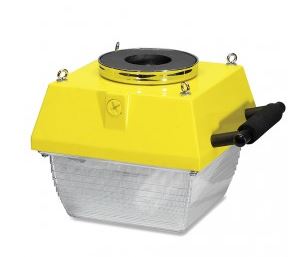We use cookies to make your experience better. To comply with the new e-Privacy directive, we need to ask for your consent to set the cookies. Learn more.
How Does Workplace Lighting Affect Productivity?
Bad lighting can be hazardous to your health — and the health of your business. Dim working conditions lead to headaches, difficulty concentrating, strained eyes, and general grumpiness, all of which add up to limit productivity and increase absenteeism.
But there's a flip side to this "dark" assessment. With a few lighting tweaks, you can actually increase productivity and create a happier, healthier working environment. Follow these 5 tips to improve lighting ergonomics in your workplace:
1. Where possible, take advantage of natural daylight.
Humans are hard-wired for alertness in sunlight. A recent study summarized in the journal SLEEP found a strong correlation between daylight exposure and the activity patterns of office workers.Day-shift staff with access to windows got an average of 47 minutes more sleep per night than their windowless peers. If you have windows in your facility, use them; a well-rested workforce is safer and more productive. 
2. Control glare.
Glare is a big problem for people who work with computer monitors. Work tasks take longer as staff continually pause to find a better view. Workers tend to lean closer to monitors, creating awkward postures that can contribute to musculoskeletal injuries. Consider using an anti-glare filter for monitors, or diffuse overhead lighting for a softer glow.3. Create more options for task lighting.
For staff who work with small components or difficult manufacturing tasks, the most important light is the one shining on the work itself. Give your workers control over their task lighting by providing bright, portable lights in every workstation. Lights with a magnetic mount are ideal for warehouses and industrial applications with lots of steel shelving.4. Shine a light on safety signage.
Industrial safety publication EHS Today recommends lighting safety signs with an intensity of 10 times the ambient light level. The goal is to increase visibility; after all, we tend to filter out the signs we see every day. A little extra light will help staff notice these crucial postings when it counts.Conduct a lighting survey.
The best way to uncover holes in your lighting ergonomics program is to conduct a lighting survey. Here's a handy checklist to get you started. Most lighting contractors also provide professional lighting audits.The Canadian Centre for Occupational Health and Safety devotes considerable attention to lighting ergonomics. As they point out in a fact sheet on the subject, the sense of sight is responsible for 85 percent of the information that people absorb at work. If you can improve the lighting in your workplace, it's almost always worth it to do so — improved productivity can provide a quick return on investment in industrial lighting equipment.
References:
Bergland, Christopher. "Exposure to Natural Light Improves Workplace Performance." Psychologytoday. Sussex Publishers, LLC, 5 June 2013. Web. 30 Sept. 2015.
Cheung, I.N. and K.J Reid. “Impact of Workplace Daylight Exposure on Sleep, Physical Activity, and Quality of Life.” Journalsleep. Associated Professional Sleep Societies, LLC, 2013. Web. 30 Sept. 2015.
“Lighting Ergonomics - General.” CCOHS. Canadian Centre for Occupational Health and Safety, n.d. Web. 30 Sept. 2015.
